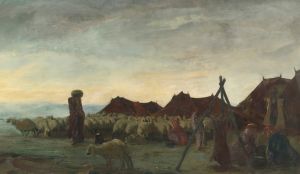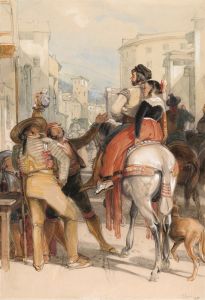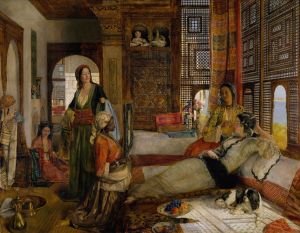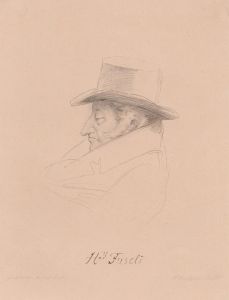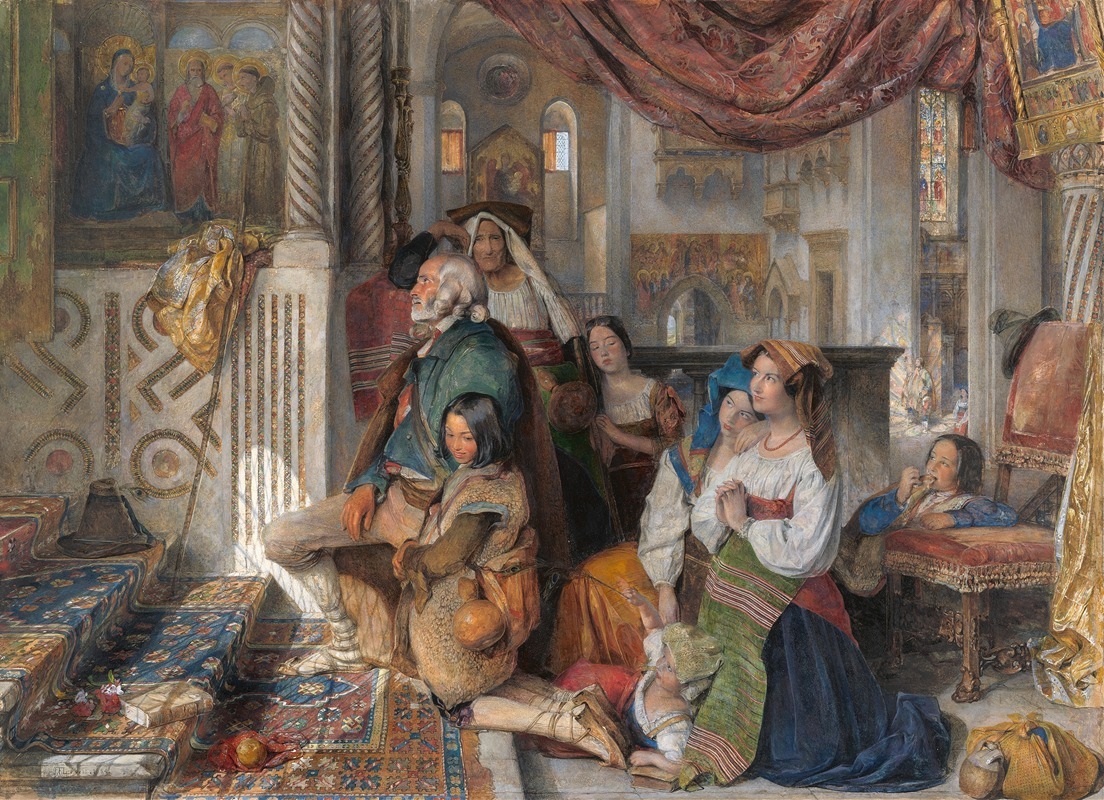
Roman Pilgrims
A hand-painted replica of John Frederick Lewis’s masterpiece Roman Pilgrims, meticulously crafted by professional artists to capture the true essence of the original. Each piece is created with museum-quality canvas and rare mineral pigments, carefully painted by experienced artists with delicate brushstrokes and rich, layered colors to perfectly recreate the texture of the original artwork. Unlike machine-printed reproductions, this hand-painted version brings the painting to life, infused with the artist’s emotions and skill in every stroke. Whether for personal collection or home decoration, it instantly elevates the artistic atmosphere of any space.
John Frederick Lewis was a British Orientalist painter known for his detailed and vibrant depictions of life in the Middle East. One of his notable works is "Roman Pilgrims," which exemplifies his meticulous attention to detail and his fascination with Eastern culture. Lewis was born in London in 1804 and initially trained under his father, Frederick Christian Lewis, an engraver. He later studied at the Royal Academy and began his career as a painter of animals and landscapes before turning his focus to Orientalist themes.
"Roman Pilgrims" is a painting that reflects Lewis's interest in the cultural and religious practices of the East. Although specific details about this particular painting are limited, Lewis's body of work often depicted scenes of everyday life, religious ceremonies, and the architectural beauty of the regions he visited. His paintings are characterized by their vivid colors, intricate details, and a sense of realism that invites viewers into the scene.
Lewis spent a significant amount of time in the Middle East, particularly in Egypt, where he lived from 1841 to 1851. This period was crucial in shaping his artistic style and subject matter. During his stay, he immersed himself in the local culture, adopting the dress and customs of the region, which allowed him to gain a deeper understanding of the people and their way of life. This experience is reflected in the authenticity and sensitivity of his paintings.
The Orientalist movement, of which Lewis was a part, was a trend in 19th-century European art that sought to capture the essence of the East. Artists like Lewis were fascinated by the exoticism and perceived mystique of Eastern cultures, and their works often depicted scenes of opulence, tradition, and daily life. However, unlike some of his contemporaries, Lewis's work is noted for its respectful and accurate portrayal of Eastern subjects, avoiding the more sensationalist and romanticized depictions common in Orientalist art.
"Roman Pilgrims" likely captures a moment of cultural or religious significance, as suggested by the title. Pilgrimages are an important aspect of many religions, including Christianity, and involve journeys to sacred sites for spiritual purposes. While the specifics of the scene in "Roman Pilgrims" are not well-documented, it can be inferred that the painting might depict a group of individuals on such a journey, rendered with Lewis's characteristic attention to detail and cultural sensitivity.
John Frederick Lewis's work, including "Roman Pilgrims," continues to be appreciated for its artistic merit and its contribution to the understanding of 19th-century perceptions of the East. His paintings are housed in various collections, including the Victoria and Albert Museum and the Tate Gallery in London, where they are studied and admired for their beauty and historical significance. Lewis's legacy as an Orientalist painter remains influential, offering insights into the cultural exchanges between Europe and the Middle East during his time.








